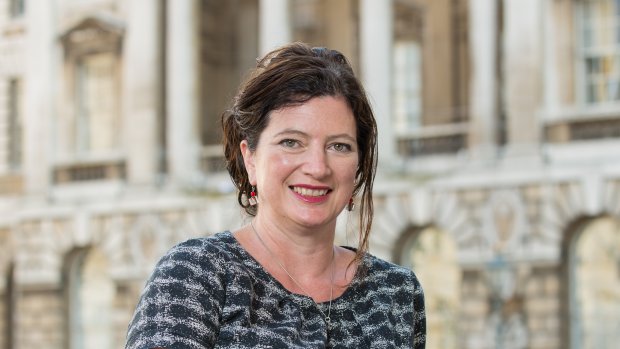
Where would you go to find an eclectic and fascinating collection of 20th and 21st century British art, including rare works by well known figures alongside fascinating pieces to discover? Tate? Manchester Galleries perhaps?
How about the British Music Collection, a unique and unrivalled collection of over 40,000 scores, recordings, books and ephemera such as concert programmes and posters? Both in its state-of-the-art physical home at the University of Huddersfield, and in its increasingly rich online incarnation (thecollection.soundandmusic.org), the British Music Collection brings together a remarkable collection and resource for discovering the music of the 20th and 21st centuries.
The question ‘why doesn’t contemporary music attract the same attention and money as contemporary visual art?’ is not a new one, of course. There is a slight feeling of the poor relation in such debates, with contemporary music pressing its wistful nose against the shiny window pane of its successful, popular and wealthy cousin and wishing it was inside.
But a piece of music in its essence cannot be bought, owned and sold as a piece of art can, nor treated as an ‘investment’ in the monetary sense. And whilst this means that new music may never attract the international hubbub of the visual arts, it can offer something else: a never-ending personal voyage of discovery for the culturally curious, whether they be artistic programmers, performers, researchers or just plain interested in beautiful and unusual music, however you define that for yourself. Which brings us back to the British Music Collection.
This incredible living archive came to Sound and Music via one of our founder organisations, the British Music Information Centre. In the BMIC’s old offices in Stratford Place, the shelves upon shelves of scores and green boxes were a dusty treasure trove to explore. With the merger (and with the cost of property in central London being what it is) this became unviable. In the University of Huddersfield we found an enthusiastic, experienced home for the physical materials.
Since the move to Huddersfield, the Collection has taken pride of place in a brand new archive centre, Heritage Quay, where it is now properly catalogued, a process of digitizing the most fragile materials is in place, and it is fully accessible to the public with a programme of events around it as well as a wonderful team of people to take care of it. It is open to anybody; go and visit!
However, we are also very mindful that the ways that people discover and share new music have transformed, even over the last 10 years, beyond all recognition. So creating a digital version of the British Music Collection is also a priority for us. The question here is: how do people find such an online resource? And how do they then explore it? Even at the most commercial end of the music industry these are pressing questions, seen most recently with the announcement of Apple Music with its combination of a large amount of music available, with well known DJs curating it through streaming.
There is an analogy here with how we are approaching the digital development of the British Music Collection. How can we make a richly textured environment for new music exploration (with lots of musical and video content) that is both searchable for a particular scoring or duration, say, and also browsable in an enticing way for an audience member seeking new musical experiences?
We are piloting an approach to this that centres around two strategies: firstly, working with a growing number of composers to upload their material onto the site and ensuring that it is accurately catalogued so that it can be searched by any relevant criteria. And secondly, working with different curators who are creating their own journeys through the online material. The latter takes different forms: we have fully curated ‘exhibitions’ online via the Google Cultural Institute. And we are also exploring building new ways of searching material through, for example, ‘free-tagging’, where browsers ‘tag’ the material they discover so that it is possible to search by tags as well as by more standard means.
Where this will take us is not yet clear – but our vision for the British Music Collection is clear. As an incredible collection offering so much to discover and explore, we want it to have the reputation and reach it deserves. If you don’t yet know about it, you have a treat in store.